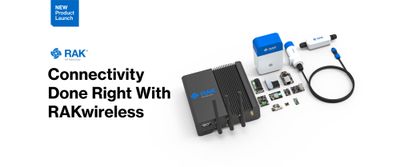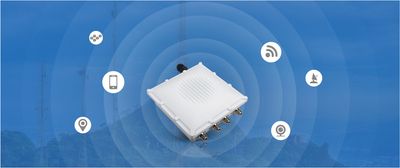How IoT Can Help Cities Respond to Emergencies
Climate change is real. In 2021 alone, several natural disasters have occurred in unexpected places as a result of our planet’s changing temperatures, such as the recent tornado in Kentucky, USA. It’s proof that we shouldn’t just worry about the future—the devastating effects of global warming are here and now. And while we’re still in the throes of it, cities and urban communities can better prepare for future emergencies with the help of IoT technology.
IoT can be an invaluable asset in emergency planning and disaster management. Designed for automation, accurate data collection, and quick response, IoT has the capabilities to measure threats that are often difficult to monitor. IoT can also help alert authorities at critical stages. The quicker the action, the better! Here are three ways IoT can enable better disaster preparedness in cities and urban areas.
- Collect data to predict or prevent future emergencies.
One of the main advantages of IoT is its ability to quickly and accurately gather data. This happens to be a crucial component in disaster preparedness. Emergencies usually go undetected until it’s too late, but IoT sensors can change that by capturing and relaying highly accurate, timely information.
Sensors can measure factors in the physical environment, such as changes in air quality, temperature, and water levels. In some cases, such as wildfires, sensors can even go as far as detecting where and how fast the fire is spreading. With IoT, authorities can efficiently monitor potential risks, plan in advance, and act before disaster strikes. - Keep communities informed and connected.
In emergencies, public access to information could spell the difference between life and death. City governments and response teams can increase public safety simply by creating more responsive and centralized communication systems with IoT. These systems, for example, could connect IoT sensors deployed in the environment with residents’ personal devices.
This means residents can use their mobile phones to, say, text a public hotline about places to avoid in the case of flooding or fire. The system can then use sensors in the field to map out high-risk areas, then deliver an accurate recommendation based on the information it receives. Data-based communication systems like this help ensure that critical information can reach the right people, especially when traditional channels may not be reliable. - Coordinate and share data between relevant authorities.
Public safety often depends on the actions of those in charge, such as local governments, agencies, response teams, and other similar authorities. Given this, these groups should have a bird’s eye view of the situation at all times during disasters. To do this, it’s important that these groups are able to coordinate and share information with each other, which will help teams to better strategize and execute the right emergency responses.
With IoT, cities can enable faster and more thorough data sharing between such groups. They can even include private data from hospitals, hotels, and other establishments that are willing to opt-in. By utilizing systemized, data-driven networks, authorities can assess situations more thoughtfully and make smarter decisions.
Timing is critical in an emergency. While IoT can’t stop natural disasters from happening, it can be used to mitigate overall risk, improve public safety, monitor vulnerable areas, and assist authorities. With IoT, cities can equip themselves to respond and recover from any kind of situation.
Looking for top quality IoT products? Discover a wide variety of IoT solutions by RAKwireless here.





